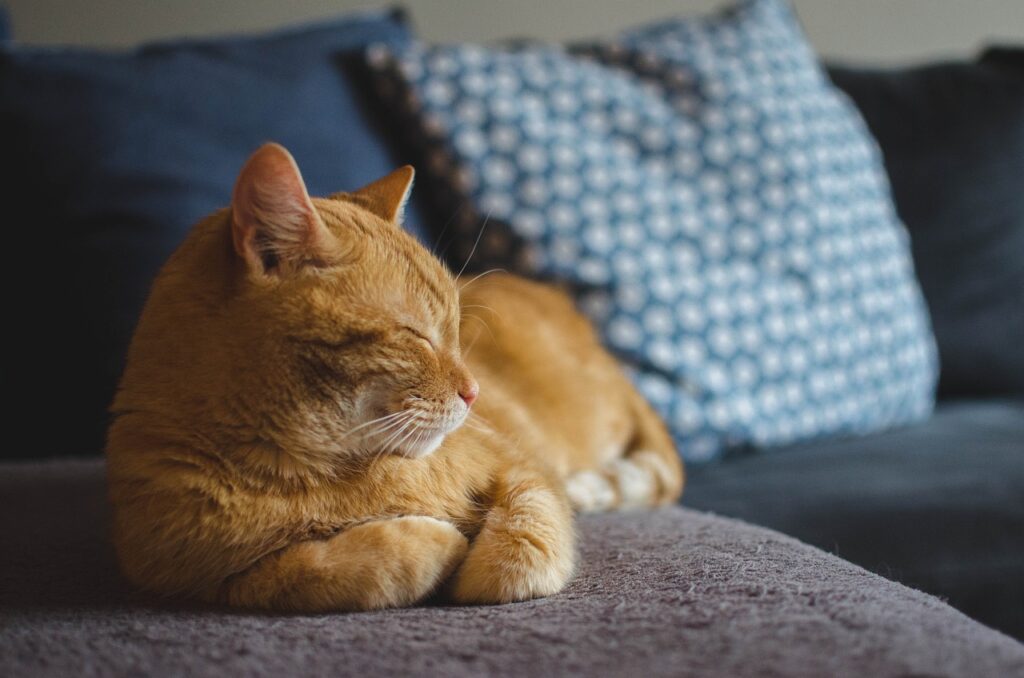Having a gluttonous cat at home can be very distressing and embarrassing. It can even create tension between you and your beloved cat if you don’t give him his kibble on time, at the right time, and in the right amount. Fortunately, there are a few simple solutions to put an end to your little feline’s voracious appetite. After showing you the root causes of this behavioral disorder, this article shows you how to solve your cat’s gluttony problem.

Gluttonous Cat: Causes and Consequences
Everyone knows that cats are natural nibblers, but they’re not gluttons. You can consider your cat gluttonous if it becomes particularly greedy, greedily devouring its kibble in seconds, and trying to eat everything in sight.
Causes of Cat Gluttony
To stop your cat’s gluttony, it is essential to understand the underlying causes of this behavioral disorder. This can be traced back to your cat’s childhood, when he was born into a litter where he had to fight for food during the first few weeks of life.
The trigger may also have occurred a little later in his life, if, for example, before having the chance to be adopted by you, the cat had a difficult childhood (life on the street, in a shelter) where food was a real luxury.
In short, the main cause of your cat’s gluttony is the fact that at some point in his life, he has experienced malnutrition or difficulty having food available. It is therefore out of fear of running out of food that your cat strives to eat quickly and as much as he can,even the smallest food he finds.
The consequences of the cat’s gluttony
- Excessive weight gain leading to obesity, with all the health problems that this entails
- High risk of poisoning, as he eats everything he finds
- The high risk of choking, due to eating quickly without having time to chew food thoroughly
- Tensions between you and your cat: The cat is more concerned with its meals than with its entertainment, which makes it stressed and irritable, especially when waiting for a meal.
Solutions to Solve Your Cat’s Gluttony Problem
Now that you know the potential origins of your little feline’s behavioral problems, you are able to put in place the optimal solutions to avoid the consequences described above.
Give him food at will
Since the origin of his gluttony is linked to the fear of a shortage of kibble, install a manual kibble dispenser for your cat, where he can eat at will. At first, he will throw himself and strive for the kibble like crazy, but after a few days, he will understand that there is plenty of food available and that there is no need to rush.
Please note, however, that this is only valid and applicable if your greedy cat is not obese and knows how to ration itself. Indeed, if after a few weeks of unlimited food your cat continues to gorge itself, then change the solution.
Increase the number of daily meals and ration the portions
If your cat is overweight and doesn’t know when to stop eating, choose several (about ten) small meals rather than a few 2 to 3 large meals a day. To make things easier, use an automatic kibble dispenser that allows you to program the number of meals, the quantity, and the time of day you want to serve your cat the kibble.
Reduce the speed at which your cat eats food
If you don’t use an automatic feeder to ration your cat, you can offer him a special bowl for gluttonous cats (bowl with obstacles, kibble maze, etc.), which can reduce mealtimes from 2 to 16 minutes. To reduce the speed at which your cat eats, you can also offer him a kibble toy dispenser, which will also have the advantage of giving him exercise.
If you have several cats and only one is gluttonous…
Choose an automatic feeder with identification (chip or collar) that can identify each registered cat and provide kibble to the cat that deserves it. This way, your gluttonous cat won’t be able to enjoy the kibble of its other companions.
